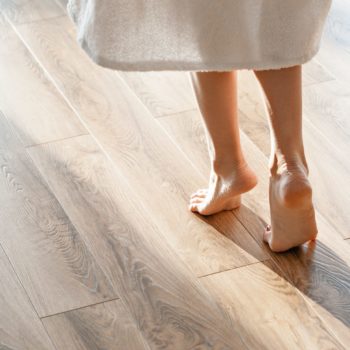Poor posture, especially if maintained for a long time, is worse for your health than you think. Sitting incorrectly can lead to back pain, neck and shoulder pain and general stiffness. Constant muscle tension and lack of movement overloads muscles, back joints and intervertebral discs, which may experience contractures, early onset of arthrosis and degeneration, respectively. The muscles mainly involved are those of the neck, back and shoulders but, while the joints and discs of the entire spine suffer from an incorrect session, here are 3 tips and some simple exercises to sit properly in the office or at home. We talked about it with Dr. Lorenzo Virelli, physiatrist at Humanitas.
How to keep your back healthy, even if you spend a lot of time in a sitting position? How can you change your habits to fix the problem? Here are a few tips.
1. Have an ergonomic position.
Pay attention to the configuration of the desk, the seat and the height of the monitor. When you sit at your desk to work, adjust the height of the seat so that your knees and hips are at an angle of about 90°, adjust the backrest to support the lumbar spine and rest your forearms on the edge of the desk to keep your elbows flexed at about 90° and your shoulders relaxed.
Place the monitor straight in front of your eyes, so your neck will be aligned with your shoulders and lumbar area, and the load on your spine will be minimal.
Remember that tilting your head and trunk forward greatly increases the weight that your back must bear, so it is not advisable to keep the monitor too low. It may be a good idea to use a computer lift and a footboard under your feet.
2. Be as active as possible during work.
Whether you are sitting or standing, experts recommend that you stay active regularly with regular movements when working. Take a short break and walk about once every hour, if possible. The human body is made to move and the musculoskeletal system is kept healthier by movement: joints and intervertebral discs receive more nourishment while muscles work better and develop more difficult contractures.
A good idea, if you have a large office with more free seats, is to do part of your computer work by placing it on a high table and standing. This way your legs can stretch out.
3. Exercise to stay healthy.
The key to reducing stress on the spine linked to a sedentary job and lifestyle, is exercise. Several studies show that physical exercise, practiced regularly for at least one hour a day, is effective in preventing all major diseases, also improves muscle and joint function, reduces the possibility of developing back pain and has positive effects on mood and night rest.
If you spend many hours in front of a screen in a sitting position, it may be useful to integrate some specific exercises for your back into your sports activity.
– Lie on your stomach and simultaneously raise your arms and legs a few inches above the ground. Hold the position for 30 seconds, relax and repeat.
– Put yourself in a quadrupedic position then bring your head down in your arms and arch your back forming a hump, hold the position for about 15 seconds; return to the starting position and push your belly down while you lift your head and look up, hold the position for about 15 seconds. Rest for 30 seconds and then repeat the exercise.
– Lie on your stomach down then point your feet and lift up your elbows, keeping your back straight. Stay in this position for thirty seconds, then lie back, relax for 30 seconds and repeat.
– Lie on your back with your buttocks resting near a wall, stretch your legs vertically, resting them on the wall to form a 90° angle with your back. Try to keep your knees extended and your back firmly resting on the ground for about 30 seconds, then relax and repeat.








